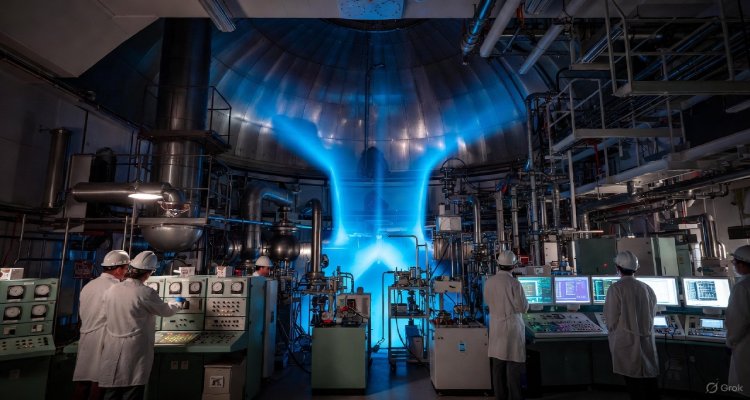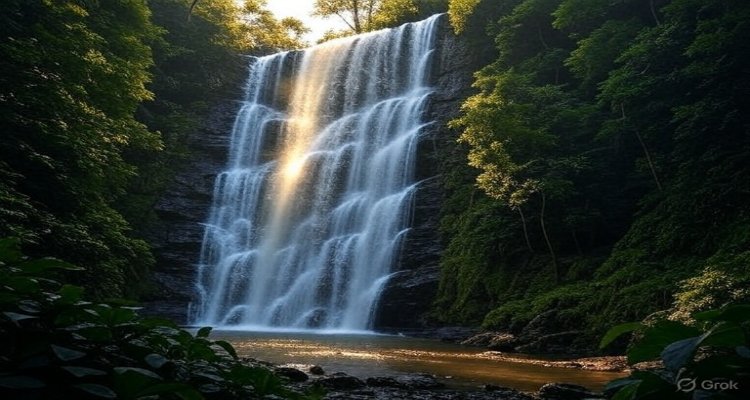The Waterfalls That Flow in Reverse
Rare atmospheric conditions and powerful winds can make waterfalls appear to flow in reverse, creating one of nature’s most mesmerizing illusions.
Introduction: When Water Climbs Instead of Falling
Waterfalls are nature’s great performers—rushing torrents of water that plunge dramatically over cliffs, inspiring awe and wonder. But in some rare corners of the world, waterfalls break the rules of gravity. Instead of cascading downward, they appear to flow upward, defying logic and leaving onlookers astonished. These so-called “reverse waterfalls” are not science fiction but real, natural spectacles born from extraordinary environmental forces.
Context & Background: Where the Phenomenon Occurs
Though most waterfalls follow a predictable path downward, reverse waterfalls occur in places where geography and weather align perfectly. Coastal cliffs, steep gorges, and valleys prone to intense winds are the most common stages for this phenomenon.
Countries like Iceland, Australia, the United Kingdom, and India have all reported instances where waterfalls seemingly flow backward. For example, in Derwent Valley, England, powerful storm winds often drive the water upward, while in Naneghat, India, monsoon-season gusts create spectacular upward surges.
This phenomenon is not permanent—it is fleeting, sometimes lasting only minutes—but it reminds us that nature is not always bound by the rules we expect.
Main Developments: The Science Behind Reverse Waterfalls
The apparent reversal of waterfalls is not due to magic but to physics. The primary driver is strong upward or lateral winds. When wind speeds are high enough, they push against the falling water, redirecting droplets back into the air.
In certain cases, air pressure differences and topography amplify this effect. Narrow gorges can funnel winds like a tunnel, creating powerful upward drafts. The result is an optical illusion where the waterfall seems to climb upward, even though gravity continues to pull the water down.
This phenomenon has gained increased attention in recent years thanks to viral videos and social media, with travelers sharing footage of waterfalls in reverse across Instagram, YouTube, and TikTok. What was once a local curiosity has now become a global fascination.
Expert Insight & Public Reaction
Meteorologists and geologists emphasize that reverse waterfalls are not permanent features but episodic weather-driven events.
Dr. Hannah Reid, an environmental scientist at the University of Edinburgh, explains:
“These waterfalls don’t actually defy gravity. What we’re seeing is wind velocity overcoming the downward pull of water droplets. It’s a reminder of how powerful atmospheric forces can be when funneled through certain landscapes.”
For locals living near these sites, the phenomenon is often a marker of seasonal weather. In coastal regions, reverse waterfalls are tied to storm surges, while in India, they mark the height of monsoon winds. For tourists, however, they are awe-inspiring natural wonders worth traveling to see.
Impact & Implications: Beyond the Spectacle
Reverse waterfalls are not just spectacles for sightseers; they also highlight the fragility of ecosystems under extreme weather conditions. Increasingly powerful storms—fueled by climate change—could make these phenomena more frequent. While captivating, they may also signal intensifying weather patterns with broader environmental consequences.
Economically, these events have boosted eco-tourism. Destinations like Naneghat in India and Kinder Downfall in England have seen spikes in visitors hoping to witness the spectacle. Yet experts warn that increased foot traffic to fragile ecosystems must be managed responsibly to avoid erosion and habitat disruption.
Conclusion: When Nature Defies Expectations
Reverse waterfalls remind us that nature has a way of bending the rules—or at least appearing to. They are not permanent wonders, but fleeting performances staged when wind, water, and landscape align. For those lucky enough to witness them, they offer both a thrilling spectacle and a humbling lesson: even the most familiar forces of nature, like gravity, can surprise us.
As climate patterns shift and extreme weather events become more common, we may see more waterfalls flowing “in reverse.” Until then, these rare events remain some of Earth’s most captivating natural illusions—where water climbs the sky instead of tumbling to the ground.
Disclaimer :This article is for informational and educational purposes only. Observing reverse waterfalls may require travel to natural sites where weather can be unpredictable; visitors are advised to prioritize safety and follow local guidelines.











